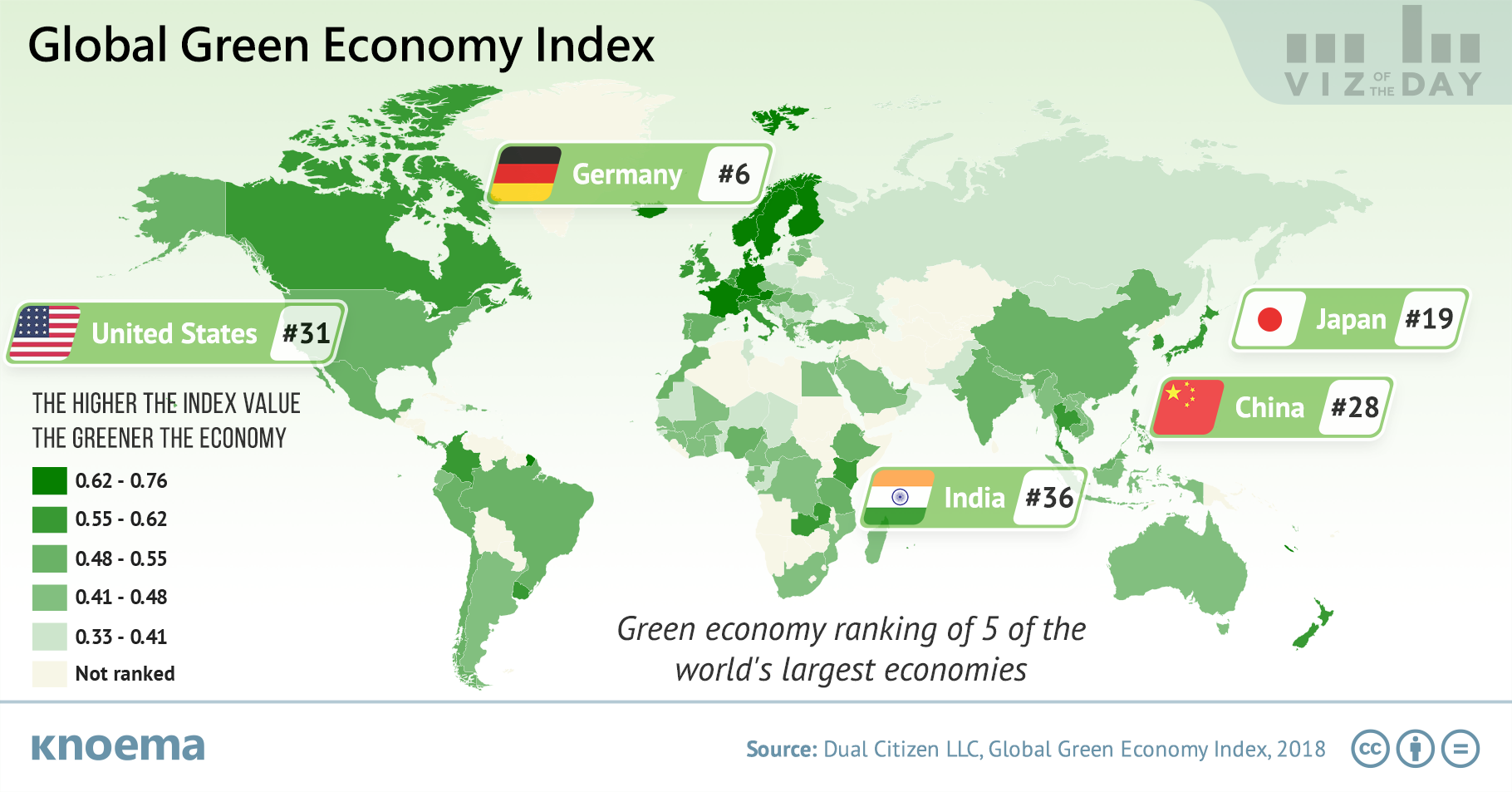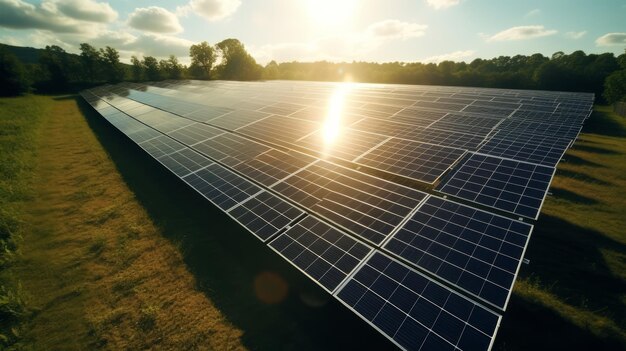
Green GDP: Measuring Economic Progress Sustainably – A Greener, Truer Picture
For decades, countries around the world have largely relied on a single number to tell them how well their economy is doing: the Gross Domestic Product (GDP). GDP measures the total value of all goods and services produced within a country over a specific period. It’s a powerful indicator, often cited in news headlines and policy debates. A rising GDP usually signals economic growth, more jobs, and increased prosperity.
But what if this number, as important as it is, isn’t telling us the whole story? What if it’s missing a crucial piece of the puzzle – the health of our planet and the long-term well-being of its inhabitants? This is where the concept of Green GDP comes in.
Green GDP is an innovative approach that aims to provide a more comprehensive and sustainable measure of economic progress. It’s about looking beyond just the money made and considering the environmental costs incurred along the way. Think of it as a financial report that not only shows profits but also the depletion of valuable assets.
The Problem with Traditional GDP: What’s Missing from the Picture?
To understand why Green GDP is so important, let’s first look at the limitations of traditional GDP.
- It Ignores Environmental Damage: When a factory pollutes a river, cleans up the mess, and then continues to pollute, both the production and the cleanup contribute positively to GDP. The actual environmental damage, the loss of clean water, or the impact on local communities are not subtracted.
- It Doesn’t Account for Resource Depletion: If a country cuts down all its forests for timber or extracts all its minerals, GDP goes up because of the economic activity. However, the long-term loss of those natural resources – the "natural capital" – is not reflected as a cost. It’s like selling off all your furniture to pay rent; you have cash now, but you’re poorer in the long run.
- It Doesn’t Value Natural Services: Nature provides invaluable services for free: clean air and water, fertile soil for growing food, climate regulation, and biodiversity. When these services are degraded (e.g., wetlands drained, soil eroded), GDP doesn’t show the loss. In fact, if we then spend money to fix the problems caused by this degradation (e.g., building water treatment plants), that adds to GDP!
- It Overlooks Social Costs: While not directly environmental, traditional GDP also often fails to capture social costs like increased inequality, poor health outcomes, or reduced quality of life that might accompany rapid, unsustainable economic growth.
- It’s a Short-Term View: GDP is excellent at showing economic activity now. But it doesn’t give us a clear picture of whether this activity is sustainable for future generations. Are we growing now at the expense of our children’s future?
In essence, traditional GDP treats natural resources as limitless and free, and environmental pollution as an "externality" (something outside the economic calculation) rather than an integral cost of doing business.
Enter Green GDP: A Greener, Truer Picture
Green GDP is an adjusted GDP figure that attempts to account for the environmental costs of economic activities. It aims to provide a more accurate measure of a nation’s true economic progress by subtracting the value of environmental degradation and natural resource depletion from the traditional GDP calculation.
Think of it this way:
Green GDP = Traditional GDP – Environmental Costs (of pollution, resource depletion, and natural capital degradation)
Sometimes, it might also include a positive adjustment for investments in environmental protection and restoration, recognizing these as contributions to long-term sustainability.
What Goes Into Calculating Green GDP? (Key Components)
Calculating Green GDP is complex because putting a monetary value on nature is challenging. However, economists and environmental scientists work to estimate the costs of various environmental impacts, including:
- Pollution Costs:
- Air Pollution: Costs associated with health problems (respiratory illnesses), reduced agricultural yields, damage to infrastructure, and climate change impacts.
- Water Pollution: Costs of treating contaminated water, health impacts from unsafe drinking water, and loss of aquatic life.
- Soil Degradation: Costs of reduced agricultural productivity due to erosion, desertification, or chemical contamination.
- Resource Depletion:
- Deforestation: Loss of timber, biodiversity, carbon sinks, and ecosystem services provided by forests.
- Overfishing: Depletion of fish stocks, impacting future catches and marine ecosystems.
- Mineral Extraction: Depletion of non-renewable resources like coal, oil, and metals.
- Water Scarcity: Depletion of freshwater sources due to overuse or contamination.
- Loss of Ecosystem Services:
- Biodiversity Loss: The value of lost species, habitats, and the services they provide (e.g., pollination, pest control).
- Wetland Destruction: Loss of natural flood control, water purification, and wildlife habitats.
- Natural Disasters (Climate Change Related): While complex, some approaches try to factor in the increasing costs of climate change-induced events if directly linked to unsustainable economic practices.
By accounting for these factors, Green GDP provides a starker, more realistic view of a country’s economic health. A country might have a high traditional GDP, but if its Green GDP is significantly lower or even declining, it indicates that its economic growth is coming at a severe environmental cost, jeopardizing its future prosperity.
The Benefits of Adopting Green GDP
Embracing Green GDP offers numerous advantages for nations striving for a truly sustainable future:
- Better Policy Making: Governments can make more informed decisions when they understand the true costs and benefits of economic activities. It encourages policies that promote sustainable development rather than just growth at any cost.
- Encourages Sustainable Practices: Businesses and industries are incentivized to adopt cleaner technologies, reduce waste, and manage resources more efficiently when their environmental impacts are reflected in national accounts.
- Reveals True Costs: It exposes the hidden costs of economic activities that might appear profitable on the surface but are actually depleting natural wealth.
- Promotes Long-Term Stability: By protecting natural capital, Green GDP helps ensure the availability of resources and a healthy environment for future economic activity and human well-being.
- Raises Awareness: It helps educate the public, policymakers, and businesses about the critical link between the economy and the environment.
- Attracts Green Investment: Countries committed to Green GDP might be more attractive to investors focused on sustainable and ethical investments.
- A Tool for International Cooperation: It provides a common framework for countries to discuss and compare their progress towards sustainable development goals.
Challenges and Criticisms
While the concept of Green GDP is compelling, its implementation faces significant challenges:
- Valuation Difficulties: How do you put a precise monetary value on a pristine forest, clean air, or a specific species of bird? There are various economic methods (e.g., contingent valuation, replacement cost), but they often involve assumptions and can be contentious.
- Data Availability and Quality: Collecting accurate and comprehensive data on environmental degradation and resource depletion across an entire country is a monumental task.
- Methodological Standardization: There isn’t one universally agreed-upon method for calculating Green GDP, making comparisons between countries difficult. Organizations like the United Nations and the World Bank are working on frameworks like the System of Environmental-Economic Accounting (SEEA) to standardize this.
- Political Resistance: Industries benefiting from environmentally damaging practices may resist policies based on Green GDP, fearing increased costs or regulations. Policymakers might also be hesitant to report a lower "Green GDP" if it makes their economic performance look less impressive.
- Complexity: It’s a more complex indicator than traditional GDP, which can make it harder for the general public to understand and for policymakers to communicate effectively.
Green GDP in Practice: Global Efforts
Despite the challenges, many countries and international organizations are exploring and implementing aspects of Green GDP and environmental accounting:
- China: Was one of the first countries to experiment with Green GDP calculations in the early 2000s, though they scaled back due to the significant downward adjustments it showed to their rapid growth.
- United Nations (UN) & World Bank: Actively promote the System of Environmental-Economic Accounting (SEEA), which provides a framework for integrating environmental data with economic statistics. While not a single Green GDP number, SEEA provides the building blocks for such calculations.
- European Union: Many EU member states are developing extensive environmental accounts that feed into broader policy decisions.
- Other Countries: Nations like Australia, Canada, Norway, and various developing countries are also working on natural capital accounting and environmental satellite accounts to inform their sustainable development strategies.
These efforts show a growing global recognition that economic success cannot be divorced from environmental health.
Conclusion: Towards a Sustainable Future
Green GDP represents a vital step forward in how we measure economic progress. While it’s not a perfect solution and faces considerable hurdles in its calculation and adoption, its underlying principle is profound: true prosperity cannot come at the expense of our planet.
By moving beyond a narrow focus on purely financial growth, Green GDP encourages a more holistic and responsible approach to development. It forces us to acknowledge the hidden costs of our actions and to recognize that our natural environment is not just a backdrop for economic activity, but the very foundation upon which all sustained human well-being depends.
Embracing Green GDP means making smarter decisions today for a healthier, wealthier, and more sustainable tomorrow. It’s about ensuring that when we talk about "economic progress," we’re talking about progress that truly benefits everyone, including future generations, and the planet we all call home.



Post Comment